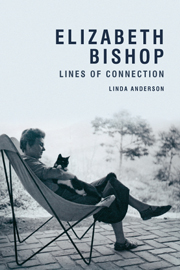Introduction
Published online by Cambridge University Press: 05 February 2014
Summary
Your scenery comes and goes, half-real and half language all the time.
(WIA, 403)A Prize ‘Unhappy Childhood’
Reading Bishop's ‘Miscellaneous Notes’ in the Vassar Archive, I came across the following comment by Bishop set out starkly on the page and offering a rare moment of self-reflection: ‘Was I adopted or adapted?’ The change of a vowel she makes is small, but it seems to point to an ambivalence that we can see running through the whole of her life about who she was and how she had been shaped by her childhood. Technically, Bishop did not become an orphan until 1934 when she was twenty-three and in her final year at Vassar College. In reality, she had lost her parents years before: first her father through Bright's disease when she was just nine months old, and then her mother through mental illness and subsequent institutionalisation in Dartmouth Hospital. After the age of five, Bishop never saw her mother again.
The next year Bishop underwent another major trauma when she was taken away from her beloved maternal grandparents in Great Village, Nova Scotia, to Worcester, Massachusetts, to be brought up – or adapted – by her paternal grandparents and provided with ‘a better education’.
- Type
- Chapter
- Information
- Elizabeth BishopLines of Connection, pp. 1 - 8Publisher: Edinburgh University PressPrint publication year: 2013



